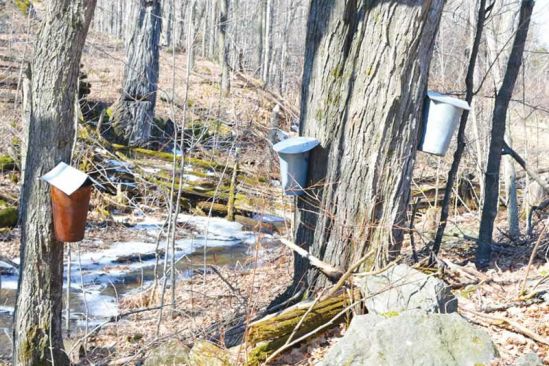Jeff Green | Mar 07, 2018
There are a range of syrup makers in our part of the world. Syrup is, at its core, a very simple process, a lot of home syrup makers are able to make enough for family and friends with a one time investment of anywhere from a couple of hundred dollars to a few thousand depending on how they want to go about it.
It is also a bigger business. Commercial syrup makers can invest in the hundreds of thousands and bring in extended family or paid labourers for several weeks for 10,000 + tap operations, reverse osmosis machines and high end tanks and evaporators. We have the whole range in our area, and from the most basic to the most sophisticated, they are all equally dependent on the weather.
Not that long ago, winter weather patterns were a lot more predictable in this part of the world. The beginnings of spring, when the temperature rose above zero in the daytime for more than a day or two, tended to be sometime in early to mid March. Those who put up lines in the bush would work away in the second half of February to catch the earliest run and maximize the coveted early sweet sap, from which they produced the coveted, subtle extra light and light syrup that consumers loved so much.
There are now a lot of small scale, hobby operations around, and this is reflected in the local hardware stores carrying more and more syrup supplies each year, and even a dedicated store that has been set up by Northway Home Hardware, which sells evaporators and boiling pans, etc.
But for hobbyists, and professionals alike, the last couple of years have been a challenge because the season has been so early, and so extended. It’s all about hurry up and wait. Before the February long weekend is over it’s time to get the buckets out, find the drill bit and get ready to get started.
One local producer, who keeps records, said the last two years were the first time they started boiling sap in February (the 22nd in 2017, and the 21st this year) in at least 40 years with one exception, a first boil on February 28th in 2000.
You see where I am going here. Are these record early starts to the syrup season indications of the impacts of climate change?
The answer seems to be that on their own, two years of an early syrup season do not indicate climate change. But when we look back at the past 10 – 15 years and see that the start date, the length of the season, the stop and start nature of it as we go through warmer and colder spells each December, is different than it was before. This has an impact on the way syrup is produced, but fortunately it has not had a severe impact on production. For us hobbyists, it is not a big deal, there is not that much at stake, but for commercial producers who are constantly investing in their business and spend time in the off-season managing their sugar bush for the long run, the un-knowable impacts of climate change on syrup production over the next 25 to 50 years are something to think about.
We do know that sugar maples are resilient, the sap may run better and sweeter some years, based on a number of factors such as water in the ground, heat units in the previous summer etc., but even when stressed for a year or two the trees tend to recover and the sap has kept flowing for millenia.
Syrup producers have noticed that, with longer summers and shorter winters, trees are growing faster than they were, and the medium term impact of this change is not known.
We do know that sugar maples have a limited range. Is the limit of that range going to move north, as long term weather conditions change?
There is something special about syrup season. The milky colour of the early sap, the smells as the weather warms up, etc., the fleeting beginnings of spring.
I must say it was odd to be tapping this year in February as the ground was already softening up from heaving frost, snow was retreating everywhere and streams that normally break through in mid-season were already bubbling.
We don’t know if there is any reason to speculate that our maple based syrup culture may become a victim of climate change, but even those of us who have only dabbled in syruping for 15 or 20 years are becoming aware of changes in the seasons, and it is impossible not to wonder whether the tradition that predates us by a long, long time will continue into the near future or not.
More Stories
- The Sun Shines On The Parham Fair
- Creating Your Own Weather, Forever and Ever
- Silver Lake Pow Wow Set For A Big Year
- South Frontenac Receives Substantial Provincial Grant for their Verona Housing Project
- South Frontenac Council Report - August 12
- Dumping To Be Curtailed At Loughborough Waste Site
- Central Frontenac Inching Towards Increasing Severance Opportunities
- Addington Highlands Council Report - August 12
- Addington Highlands Council Report - August 5
- Addington Highlands Council Report - August 12

